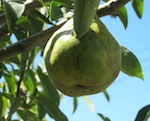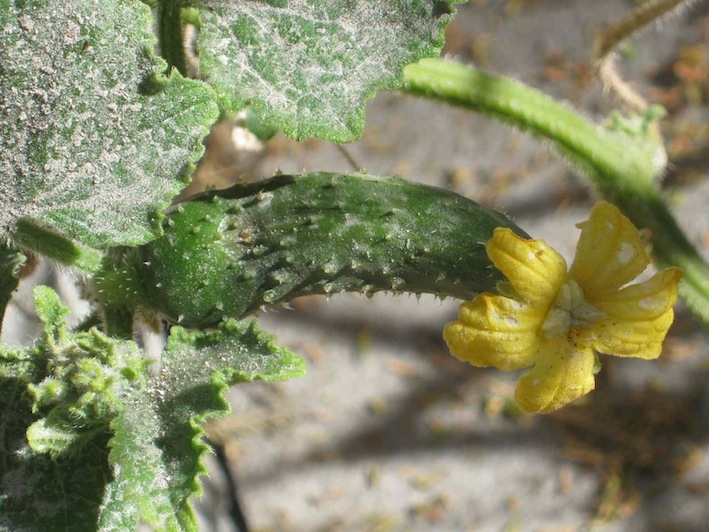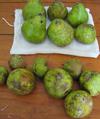Dear Reader, in this age of AI created content, please support with your goodwill someone who works harder to provide the human-made. Sign up at the top of the lefthand column or bottom of this page. You will receive my hand illustrated monthly newsletter RESTORE NATURE and access to the biodiversity garden design course as I write...and nothing else, I respect your time. I am also removing the advertizing as best I can as its become intrusive inappropriate and pays me nothing.
fruit fly control by exclusion: organic pest control that keeps the flies out without using poison
netting and bagging: fruit fly control by exclusion
The first method of fruit fly control by exclusion could either use mosquito netting, shade cloth or fly screen covering the whole orchard or tree, and supported by a frame. The other method is known as bagging, a bag covering the individual fruit, or fruit clusters, and tied tight round the stem. The bags can be made of cloth, netting, newspaper or other paper like waxed paper.
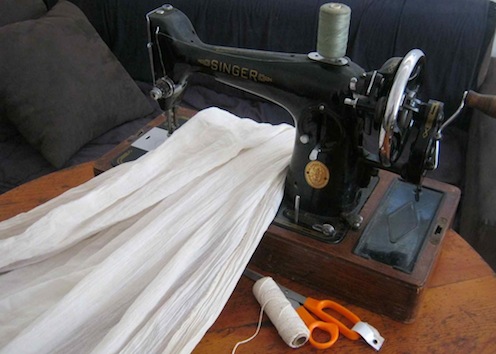 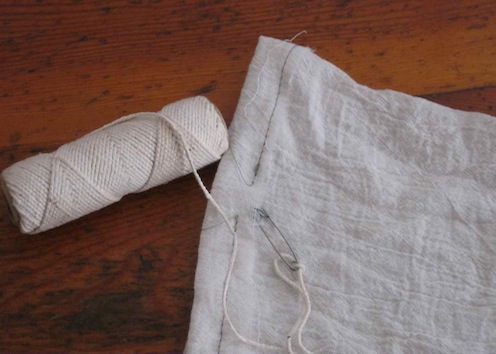 |
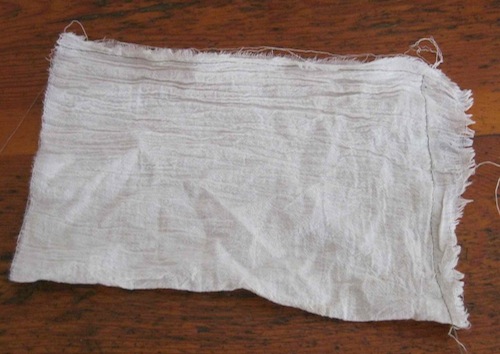 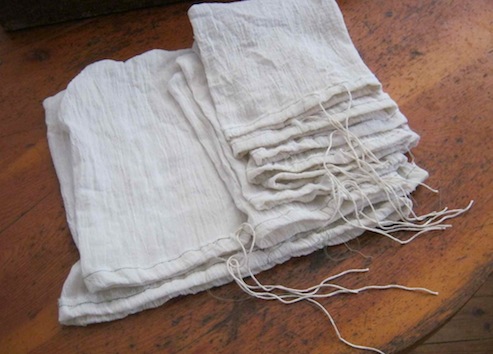 |
materials for making bags are simple, cheesecloth, string, sewing machine, machine thread, safety pin and scissors
The bagging should be done as soon as the flower parts shrivel or drop off, according to experts, because the fruit flowers need to be pollinated before you exclude insects, but in my observation of cucumbers it is too late. The cucumber flowers are open for quite a while and as you can see there is a picture of a cucumber ovary that has been stung while it still has a flower. I tried to get around this problem by hand pollinating the cucumber and bagging it as soon as it first appears on the vine and the flower opens. Tomatoes and capsicum are self pollinating so the fruit stalks can be bagged as soon as possible.
Bagging is labour intensive and requires regular monitoring and bagging through the fruiting season every 14 days, apparently, but I would say this could be too long a period of time. I would monitor daily for fruit that needs bagging. However it is said by multiple sources, to be the most certain method of control and very cost effective in terms of the materials on a small scale, as the cloth bags and waxed paper bags can be reused.
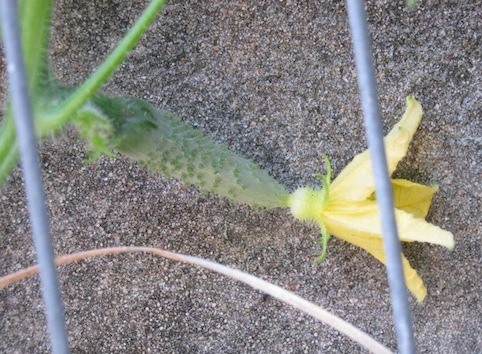 a young cucumber fruit before bagging
a young cucumber fruit before bagging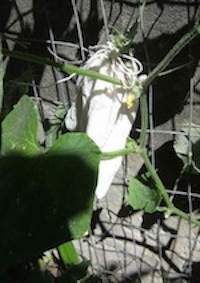 a tiny cucumber, fertilized by hand and bagged to prevent fruit fly attack
a tiny cucumber, fertilized by hand and bagged to prevent fruit fly attack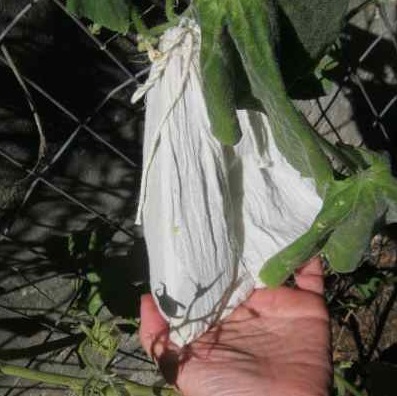 weeks later the same cucumber has swollen to fill the sack, and has no fruitfly
weeks later the same cucumber has swollen to fill the sack, and has no fruitfly
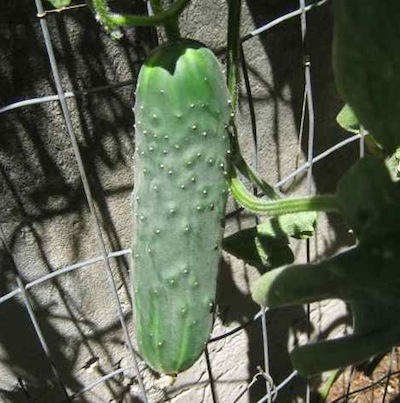 The cucumber out of the bag, healthy with no fruit fly The cucumber out of the bag, healthy with no fruit fly |
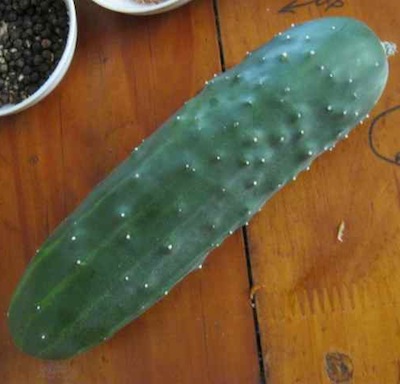 The cucumber on the kitchen table ready to be made into juicy salad The cucumber on the kitchen table ready to be made into juicy salad |
The small fruit should be thinned to leave space for them to expand to their full size without touching other fruit, and then bagged with a bag large enough to accommodate the fully developed fruit. Shading the fruit does not matter, they fill out due to nutrients coming from the tree sap and photosynthesizing leaves and usually do not need strong sunlight to ripen. In fact when covered they may be larger and sweeter than usual. The bags supply the fruit with protection from other insect pathogens as well as some protection from birds.
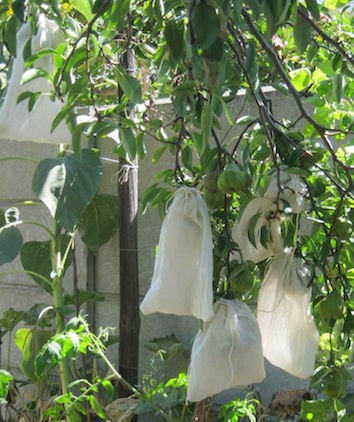 a number of green pears after bagging
a number of green pears after baggingfruit fly control by exclusion: dusting
Another way of excluding fruit flies is to dust the fruit with a particle film barrier. That is a powder repellent to certain species of female fruit flies, like kaolin, diatomaceous earth or wood ash. This dusting will need to be redone if the plant gets wet where you have dusted, such as after rain or irrigation.
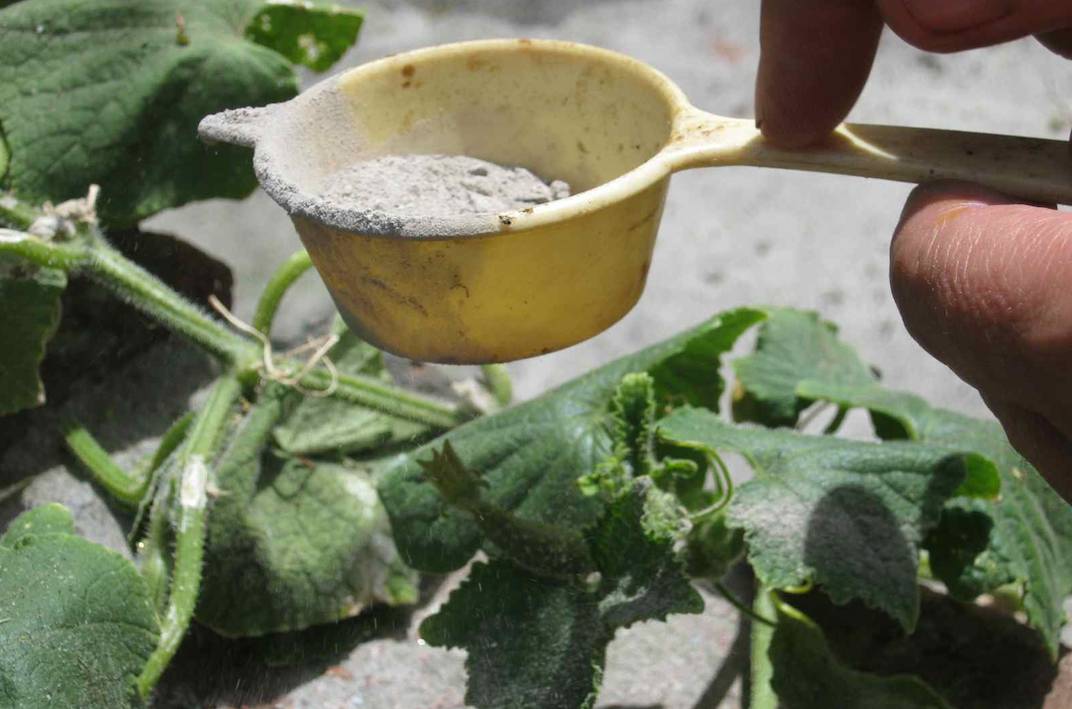 dusting a small cucumber with wood ash
dusting a small cucumber with wood ashThe cheapest and most readily available powder was wood ash,
and I experimented with using it and found it to be only partially successful, and
discouraging oviposition, or ‘stings’. I did not have great enough numbers of
small cucumbers to get a good measure of its success rate. I also wonder
whether wood ash does not burn the plant when it gets wet, after all one makes
lye by mixing water and ash. However the leaves I dusted seemed to take the ash
quite well. Kaolin and diatomaceous earth are available as gardening products
commercially and may be obtained at some nurseries, earth mines or on the
internet.
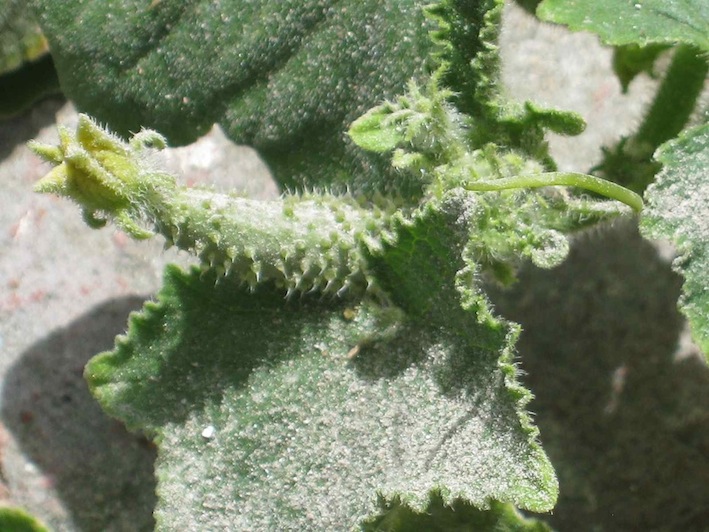 the young cucumber after dusting
the young cucumber after dustinghome page for many useful links to gardening the natural way
vegetable gardening the low cost way using natural methods
fruit fly control an overview of treatments and life cycle
a commercial website offering fruit fly exclusion products
You’re a home gardener ! Share your experiences and questions !
We all know about home gardening. Tell us about your successes, challenges and ask about issues that bother you. You may have the luxury of a back garden, but there are other ways we learn. Few people age without growing something or buying vegetables during their lives ! It is absolutely guaranteed that you have learned things which can help others on their gardening journey.
We invite you to share your stories, ask questions, because if a thing has bothered you it will bother others too. Someone may have a solution ! No question is too small. There is learning for everyone involved, for you, for me (yes, I learn from every question), for us all. Exciting stuff !
We are starting on a new journey. Every week we will profile your letters ! The best stories and questions we receive.
What Other Visitors Have Said
Click below to see contributions from other visitors to this page...
What do I do with green pears ? 




Hi Carol
I harvested my pears very early to prevent attack by insect pests. What do I do with these green, awful tasting, woody pears ?
regards
…
something got through the bag ! 




I'm just posting a pic of the hole in the bag as well as the damage done to the fruit
The bagging for fruit fly works differently on pears 




Hi
I did the same thing with some pears
I made bags and hung them for protection over the pears
admittedly the pears were already large but still …
conclusion to the season Not rated yet
The bags did not prevent a large hole eating insect and a maggot producing one from getting at SOME of the pears. However, there was a group of pears in …
Restore Nature Newsletter
I've been writing for four years now and I would love to hear from you
Please let me know if you have any questions, comments or stories to share on gardening, permaculture, regenerative agriculture, food forests, natural gardening, do nothing gardening, observations about pests and diseases, foraging, dealing with and using weeds constructively, composting and going offgrid.
SEARCH
Order the Kindle E-book for the SPECIAL PRICE of only
Prices valid till 30.09.2023
Recent Articles
-
garden for life is a blog about saving the earth one garden at a time
Apr 18, 25 01:18 PM
The garden for life blog has short articles on gardening for biodiversity with native plants and regenerating soil for climate amelioration and nutritious food -
Cape Flats Sand Fynbos, Cape Town's most endangered native vegetation!
Apr 18, 25 10:36 AM
Cape Flats Sand Fynbos, a vegetation type found in the super diverse Cape Fynbos region is threatened by Cape Town's urban development and invasive alien plants -
Geography Research Task
Jan 31, 25 11:37 PM
To whom it may concern My name is Tanyaradzwa Madziwa and I am a matric student at Springfield Convent School. As part of our geography syllabus for this
"How to start a profitable worm business on a shoestring budget
Order a printed copy from "Amazon" at the SPECIAL PRICE of only
or a digital version from the "Kindle" store at the SPECIAL PRICE of only
Prices valid till 30.09.2023
